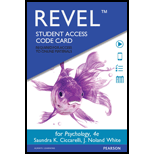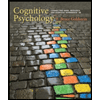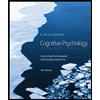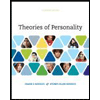
To determine:
The time when a person is conformed with a group of friends.
Introduction:
Stanley Milgram was a social psychologist at Yale University. Milgram conducted an experiment on the conflict in between the personal conscience, and obedience to authority. To conduct his experiment, Milgram started recruiting people, and told them that they would be participating in experiment to check the punishment effect on their learning behavior.
To determine:
Whether an individual believed their (group of friends) decision to do something was a poor decision.
Introduction:
Stanley Milgram was a social psychologist at Yale University. Milgram conducted an experiment on the conflict in between the personal conscience, and obedience to authority. To conduct his experiment, Milgram started recruiting people, and told them that they would be participating in experiment to check the punishment effect on their learning behavior.
To determine:
Whether an individual conformed with the group, and went along with the behavior.
Introduction:
Stanley Milgram was a social psychologist at Yale University. Milgram conducted an experiment on the conflict in between the personal conscience, and obedience to authority. To conduct his experiment, Milgram started recruiting people, and told them that they would be participating in experiment to check the punishment effect on their learning behavior.
To determine:
The factors that would keep a person from objecting group conformity.
Introduction:
Stanley Milgram was a social psychologist at Yale University. Milgram conducted an experiment on the conflict in between the personal conscience, and obedience to authority. To conduct his experiment, Milgram started recruiting people, and told them that they would be participating in experiment to check the punishment effect on their learning behavior.
Want to see the full answer?
Check out a sample textbook solution
Chapter 12 Solutions
Psychology, Books a la Carte Edition; REVEL for Psychology
- can you make me a a spps box plot that has all the data 1- through 67 that has age,ethencity, person 2 is person attractive with tattoss and queston 13 is attractive without tattoosarrow_forwardI need you to make a box plot on SPSS using age, ethnicity, person 2 is people attractive with tatoos an person 13 is people attractive without tattosarrow_forwardCan you help me find 20 peer review article on psychology evolutinary&culturalarrow_forward
- Does this article have to do with evolutionary psychology & cultural https://www.cambridge.org/core/journals/ageing-and-society/article/views-and-experiences-of-adult-children-concerning-intergenerational-relationships-with-their-older-kin-a-qualitative-study-from-south-india/F71A9BA3F3FB27D16CE589E8885CFB53arrow_forwardWhat should the role of a school counselor be as it applies to Section 504 of the Rehabilitation Act of 1973? Write in a narrative format and include in the in-text citations of the following source: “American School Counselor Association. (2024). The school counselor and Section 504 plan and process. https://www.schoolcounselor.org/Standards-Positions/Position-Statements/ASCA-Position-Statements/The-School-Counselor-and-Section-504-Plan-and-Proc “arrow_forwardWhat role do you think social media has on the occurrence of domestic violencearrow_forward
- can you help make a factor ANOVA on SPSS the data I need is the age, ethnicity and all 8 questions which are 1.How likely are you to adopt new trends or practices that are considered unconventional or unorthodox in your culture or society? 2.To what extent do you feel the need to be different or unique in your choices, behaviors, or appearance? 3. How often do you find yourself drawn to subcultures or groups that reject mainstream values? 4. How important is it for you to express your individuality, even when it means going against social or cultural expectations? 5. To what degree do you enjoy challenging social norms or questioning authority figures? 6.How Important is it to you to be different or unique in your choices, behaviors, or appearance? 7. How often do you engage in behaviors or make choices that are perceived as unconventional or rebellious? 8. How comfortable are you with being judged or criticized for your nontraditional beliefs or actions?arrow_forwardI need help making a spss box plot using the data age, gender, ethnicity, and person 1 to person 20 https://docs.google.com/spreadsheets/d/1V582jSoi5i4-jfxGxmS4O6kydNtWbMFIDNJ1u7RfpPk/edit?usp=sharingarrow_forwardOut of these questions, which of these questions would match with the predictor: one preference for nonconformity predicator 2 social influence, environmental effects? questions 1. How likely are you to adopt new trends or practices considered unconventional or unorthodox in your culture or society? 2. To what extent do you feel the need to be different or unique in your choices, behaviors, or appearance? 3. How often do you find yourself drawn to subcultures or groups that reject mainstream values? 4. How important is it for you to express your individuality, even when it means going against social or cultural expectations? 5. To what degree do you enjoy challenging social norms or questioning authority figures? 6.How Important is it to you to be different or unique in your choices, behaviors, or appearance? 7.How often do you engage in behaviors or make choices that are perceived as unconventional or rebellious? 8.arrow_forward
- I need help doing an SPSS box blot on age, gender, and people 1 through people 20arrow_forwardGough creative personality scale share your observations regarding how it felt to take the inventory, and whether you think it captures the concepts it is attempting to measure.arrow_forwardMiddle Childhood is the period between 7 years old and 11 years old. Middle childhood can be a difficult time for children and parents to navigate. “Dear Abby” used to be an advice column where people would write in and ask for help with various situations/problems in their life. A modern day slightly similar equivalent would be Reddit’s popular thread including a NSFW term. Your task is to identify two “problems/dilemmas” caregivers of a child in middle childhood may encounter and give advice based on the research in child development. This is not just your opinion; this needs to be backed up with empirical evidence.arrow_forward
 Ciccarelli: Psychology_5 (5th Edition)PsychologyISBN:9780134477961Author:Saundra K. Ciccarelli, J. Noland WhitePublisher:PEARSON
Ciccarelli: Psychology_5 (5th Edition)PsychologyISBN:9780134477961Author:Saundra K. Ciccarelli, J. Noland WhitePublisher:PEARSON Cognitive PsychologyPsychologyISBN:9781337408271Author:Goldstein, E. Bruce.Publisher:Cengage Learning,
Cognitive PsychologyPsychologyISBN:9781337408271Author:Goldstein, E. Bruce.Publisher:Cengage Learning, Introduction to Psychology: Gateways to Mind and ...PsychologyISBN:9781337565691Author:Dennis Coon, John O. Mitterer, Tanya S. MartiniPublisher:Cengage Learning
Introduction to Psychology: Gateways to Mind and ...PsychologyISBN:9781337565691Author:Dennis Coon, John O. Mitterer, Tanya S. MartiniPublisher:Cengage Learning Psychology in Your Life (Second Edition)PsychologyISBN:9780393265156Author:Sarah Grison, Michael GazzanigaPublisher:W. W. Norton & Company
Psychology in Your Life (Second Edition)PsychologyISBN:9780393265156Author:Sarah Grison, Michael GazzanigaPublisher:W. W. Norton & Company Cognitive Psychology: Connecting Mind, Research a...PsychologyISBN:9781285763880Author:E. Bruce GoldsteinPublisher:Cengage Learning
Cognitive Psychology: Connecting Mind, Research a...PsychologyISBN:9781285763880Author:E. Bruce GoldsteinPublisher:Cengage Learning Theories of Personality (MindTap Course List)PsychologyISBN:9781305652958Author:Duane P. Schultz, Sydney Ellen SchultzPublisher:Cengage Learning
Theories of Personality (MindTap Course List)PsychologyISBN:9781305652958Author:Duane P. Schultz, Sydney Ellen SchultzPublisher:Cengage Learning





